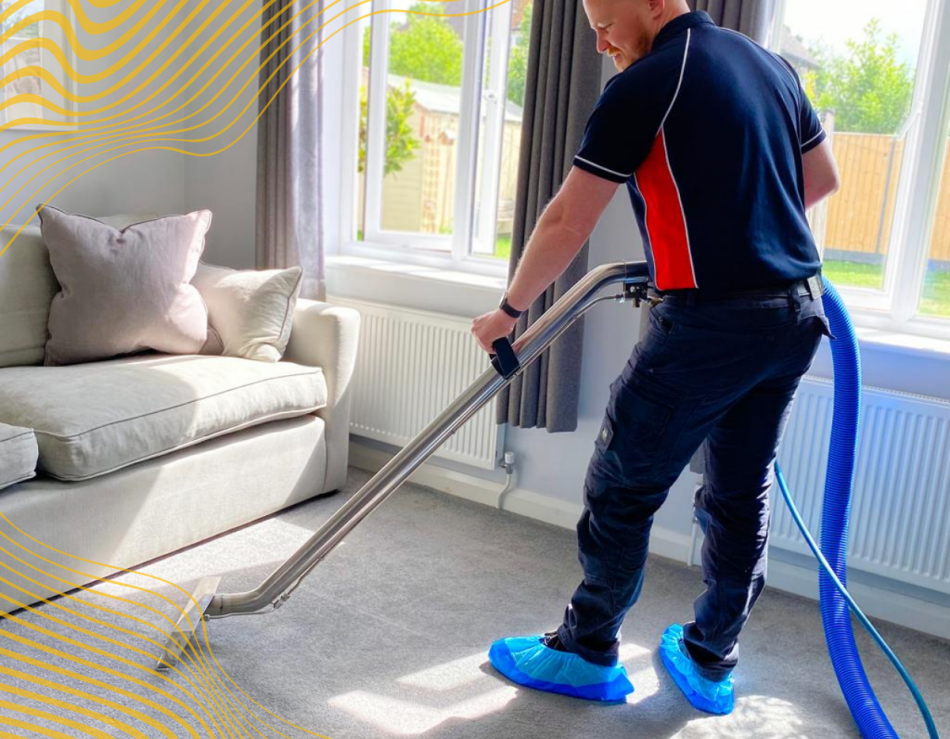Professional Carpet Cleaning
With 60 years of experience, Safeclean are trusted experts in professional carpet cleaning. Whether you’re looking for a full deep clean to refresh your home or need specialist help with carpet stain removal, our trained technicians use proven methods to bring your carpets back to life.

Carpets trap dust, bacteria, and allergens that regular vacuuming simply can’t remove. A professional carpet clean not only improves how your home looks, it also helps maintain a healthier living environment. Most manufacturers recommend having your carpets cleaned professionally every 12–18 months – or more often in homes with pets or children.
Different carpet materials require different cleaning methods. Using the wrong products can lead to permanent damage, so it’s always best to call in expert carpet cleaners. Before starting any work, your local Safeclean technician will assess your carpet type and condition to determine the most suitable cleaning process. This ensures your carpets are cleaned safely, thoroughly, and effectively — helping them stay fresh and last longer.
If you’re searching for carpet cleaning near me, choose Safeclean for professional, reliable results every time.
Find your local technician now to get a free, no obligation quote
Get in touch with your local Safeclean specialist today

Frequently asked questions
Carpet fibres can broadly be divided into two types: natural and synthetic. Often carpets are made of a blend of the two, and new combinations of materials are being developed all the time to meet new consumer demands. It’s not straightforward to create a material that is durable, attractive to look at, attractive to touch, easy to clean and affordable all at the same time.
Nylon - Nylon carpets are relatively easy to maintain, and do not require professional cleaning as often as other materials (although it is still recommended that they be cleaned at least every two years).
The most important aspect of maintaining a nylon carpet is regular vacuuming, although vacuuming with too much direct contact should be avoided as this can lead to excessive fuzzing.
When it comes to cleaning carpets effectively, a knowledge of chemistry certainly helps. Technicians with Safeclean will know never to use a cleaning solution with a pH of more than 10 on a nylon carpet. Cationic agents, found in many biocides, should also not be used.
Polypropylene - Again, regular vacuuming is the best way to ensure your polypropylene carpet has a long life and doesn’t lose its lustre.
Polypropylene is a resilient material and soiling can be removed with 50/50 bleach and water. However, citrus based cleaners are to be avoided.
Polypropylene is oleophilic, meaning that it attracts oils. Oily marks are therefore hard to remove and require a special solution which suspends the soiling before it can then be removed.
Acrylic - Acrylic was developed by chemical giants DuPont in the early 20th century as an alternative to wool. It’s a popular material due to its low price and ease of cleaning, being far quicker to dry than its natural counterpart.
Acrylic carpets require even more regular vacuuming to be properly maintained, as it’s easier to break down (a process which dirt and contaminants can accelerate). Acrylic carpets can be cleaned effectively with quality machine cleaners.
Polyester - Polyester carpets can look good and are certainly an affordable option, although they are undermined by their relative lack of resiliency.
However, as it resists fading and staining so well, they are easy to clean. There are many effective chemical carpet cleaners which are safe to use on polyester.
Wool - Although wool fibres are naturally resistant to dirt, when dirt does get in there it will cause damage, particularly in high-traffic areas. For this reason it is also recommended that wool carpets be vacuumed regularly.
Some people think that wool carpets shouldn’t be cleaned with water, as they can take a long time to dry. However this is not true – wool is after all a kind of hair, and can be cleaned with water if used in sensible amounts.
The basic requirements for wool cleaning solutions include low alkalinity, non-sticky residue on drying, good cleaning power and no added bleaches or dyes.